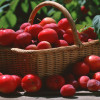Cherry plum Kometa is a hybrid variety that will give delicious fruits
Content
Description and distinctive features
The Kuban comet is a hybrid obtained from crossing the Pionerka cherry plum with the early plum Skoroplodnaya. Work on breeding the variety began back in 1977, and, including trials, lasted almost 10 years, after which in 1987 the Kuban comet variety was entered into the State Register and officially allowed for cultivation in most regions.
Before describing this variety, it should be recalled that, despite the high yield and abundant fruiting, the trees of this cherry plum are very low (up to 2.5-3 m) and compact. This quality has a lot of weight for gardeners and summer residents who have a small planting area. The cherry plum crown is round, but since it is easy to form, some gardeners give it the most diverse shape. Outwardly, these trees are very attractive: the trunk is smooth, gray in color, the shoots are horizontal in relation to the trunk, the branches are of medium thickness, the leaves are elongated, pointed upward, not pubescent, of a rich green color.
Cherry plum trees look especially elegant in spring during flowering. The branches are literally strewn with multiple snow-white flowers. The flower buds are not very large, rounded, medium-sized flowers, collected in pairs in inflorescences. Petals are white, concave ovoid, stamens are orange-yellow, located at the bottom of the calyx. Pedicels are short (1.2-1.4 cm).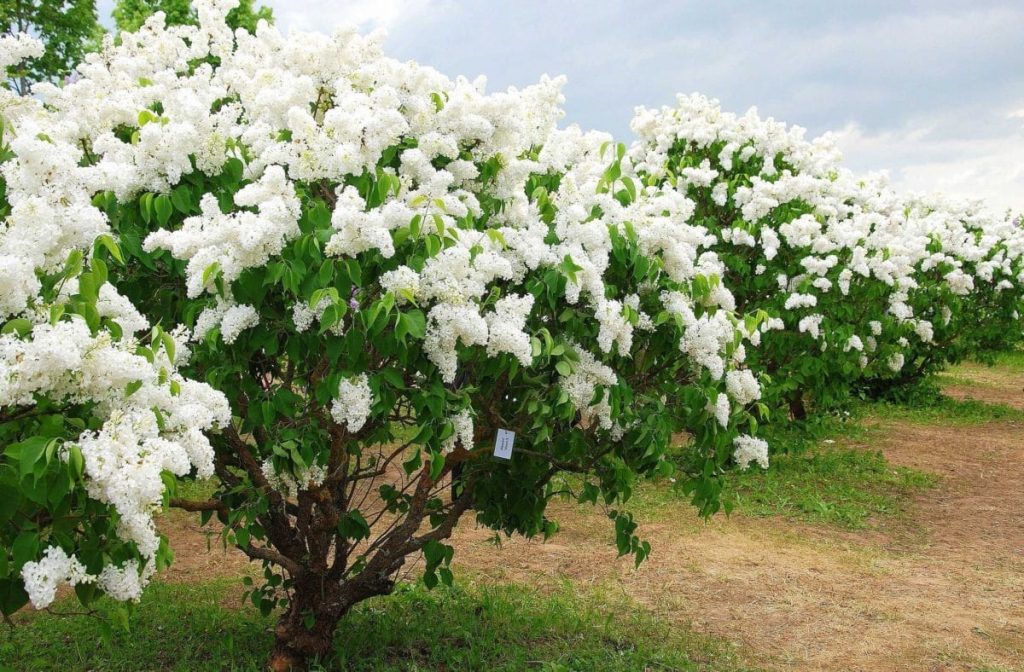
The fruits are quite large, varying in size from 25 to 45 g, depending on the growing conditions. In shape, the fruits are round-ovate, slightly pointed at the apex, the abdominal suture is poorly expressed. The skin is thin, but strong, at full maturity it reaches a burgundy color and is covered with a slight waxy bloom. The pulp is very juicy, fibrous, intense yellow or orange in color, aromatic and rather sweet in taste. The stone is small, rough, almost does not separate from the pulp. The fruits are perfectly stored, and even at full maturity they do not crack and remain hanging on the tree.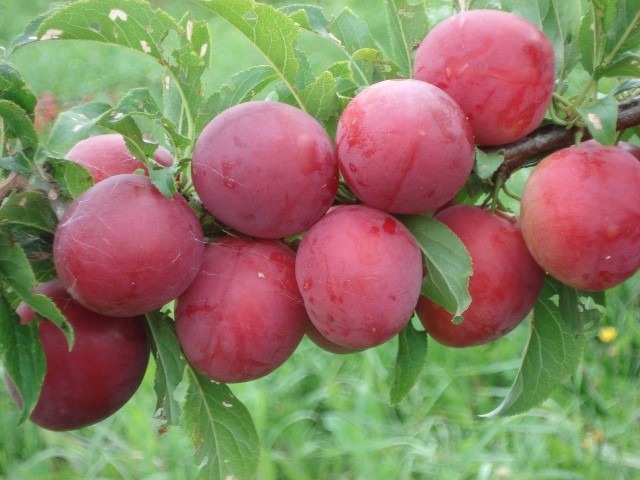
Since the variety was originally intended for widespread consumption and cultivation in any region, the breeders bred two hybrids that differ in ripening time: cherry plum Comet late, ripening at the end of August, and Comet early, fruiting in mid-July. Both varieties do not differ at all in taste, they are able to withstand severe frosts (down to -30 ° C) and slight drought.
The cherry plum yield is very high and this figure is growing every year. An adult tree is capable of producing up to 8 buckets (approximately 50 kg) of fruit.
The tree begins to bear fruit quite early - 2-3 years after planting. The variety is partially self-fertile, therefore, next to the cherry-plum trees, the Kuban comet, it is necessary to plant such varieties as Traveler, Mara, Gift to St. Petersburg, as well as Skoroplodnaya plum.
Video "Growing"
From the video you will learn how to grow this fruit tree.
Landing features
Cherry plum variety Kubanskaya comet, the description of which is presented above, like any plum, is thermophilic and demanding on lighting. Planted in a sunny location, it will bear sweet and large fruits. If it is planted in the shade, then the fruits will be small and very sour, which is not typical for this variety. The same applies to the weather, the sunnier and warmer the summer, the sweeter and tastier the fruits will be. In a word, when choosing a place for the Kuban comet cherry plum variety, give preference to well-lit and windless areas with deep groundwater. Cherry plum grows well against a wall or fence, which closes it from the northern winds.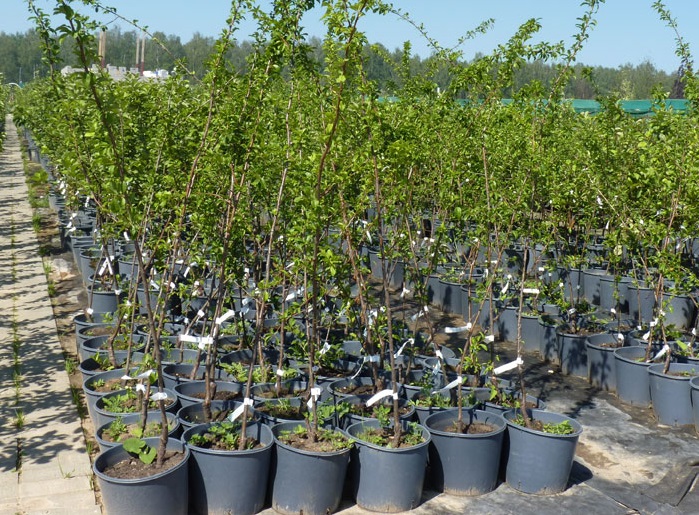
Cherry plum is not very demanding on the composition of the soil, but good drainage and neutral acidity of the soil are extremely important for it. The tree will feel great in loose sandy or sandy loam soil with a fertile layer of humus. If there is not enough organic matter in the soil, you can add compost or humus. In the case of increased acidity, the soil is limed, or ash is added. Alycha Kuban comet is not suitable for heavy clay or loamy soils, as well as wetlands.
Planting cherry plum is possible in early spring or autumn, but for the northern regions and the middle lane, planting in spring is preferable. For planting, it is advisable to purchase cherry plum seedlings with a closed root system - such plants take root better and faster. If a seedling with open roots is purchased, then before planting it must be placed in water or a stimulating solution for several hours - this measure will accelerate the rooting of the plant in a new place.
Planting holes for cherry plum should be prepared in advance, 1-2 weeks before planting. Fertilizers are applied to the planting pit. To do this, you need to mix the earth dug from the pit with humus (preferably horse), about 0.5 buckets, superphosphate (250 g), potassium sulfide (40-50 g). Fill this soil mixture halfway back into the pit with a mound, on which to set the seedling vertically and manually cover it with earth. When planting cherry plum, you need to ensure that the root collar is not buried in the soil, but rises 2 centimeters above the surface. After planting, the plant is watered and tied to a peg.
Plant care
The yield of cherry plum largely depends on proper care, so all activities should be carried out on time, and in accordance with the following recommendations:
- watering - an adult tree is watered three times during the season (in June, July and September) at the rate of 3-4 buckets of water, while water is poured into the hole around the trunk, the seedlings are watered frequently (as the soil dries up);
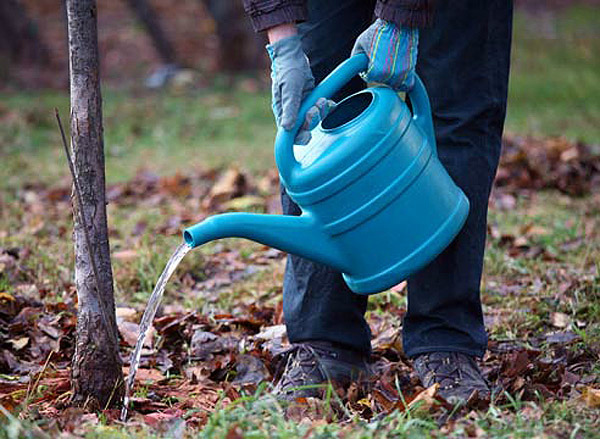
- top dressing - starting from the second year, cherry plum is fed 3-4 times per season: in spring - a complex mixture with nitrogen (50 g / m2), after flowering - a potassium-phosphorus mixture (40 g / m2), after fruiting - potassium sulfate (30 g / m²), before wintering - mulching the trunk circle with humus or compost (0.5 buckets / m²);
- pruning - in the first 3 years pruning is carried out 2 or 3 times during the season (this allows you to form the desired crown shape), planned pruning is carried out in spring (frozen branches are removed, young shoots are shortened) and in autumn (dry, diseased and excess branches are removed);
- shelter for the winter - before wintering, young seedlings are completely wrapped in garden material (burlap, spunbond), and the roots are covered with organic mulch, an adult tree only needs to cover the roots with organic matter;
- loosening and keeping the soil clean in the trunk circle;
- to attract insects during the flowering period, it is recommended to spray trees with a honey solution (1 tablespoon honey / 1 liter of water) - this simple procedure will improve pollination;
- the first flowering of cherry plums of this variety occurs very early, 2-3 years from planting, and since at this time the tree is not yet able to withstand the load of fruits, all flowers should be cut off - this measure will allow the tree to grow stronger and bring a greater harvest next year.

An adult cherry plum tree always bears fruit abundantly. After flowering, it is strewn with green fruits, which, when ripe, will create a heavy load on the branches, and may even break them. To prevent this from happening, some of the green fruits must also be removed at the ovary stage. This will reduce the load on the branches and produce larger fruits.
Diseases and pests
The cherry plum variety Kuban comet is quite resistant to the effects of pests and various diseases. As a rule, with the observance of agricultural technology and proper care, including preventive treatments, trees are not negatively affected.  However, in rare cases, fruit trees growing nearby can pose a danger to cherry plum, it is from them that harmful insects and painful microorganisms move to the cherry plum.
However, in rare cases, fruit trees growing nearby can pose a danger to cherry plum, it is from them that harmful insects and painful microorganisms move to the cherry plum.
It should be noted that cherry plum suffers from the same diseases as the plum. This is brown spot and rust on the leaves. Both diseases result in withering and shedding of foliage.
The fight against them consists in spraying with insecticides: 1% Bordeaux liquid before bud break and after flowering, or 1% copper sulfate solution in early spring. In the fall, after the fall of leaves, the foliage from the recovered trees must be collected from the ground and burned.
Often, transparent glassy growths form on the trunks of fruit trees - this is a hardened gum flowing from the wood. If gum begins to leak out on your cherry plum, then this may be a sign of an increase in soil acidity. It is necessary to limit the application of fertilizers and equalize the pH of the soil, and the formations themselves should be removed and the pruning sites should be disinfected.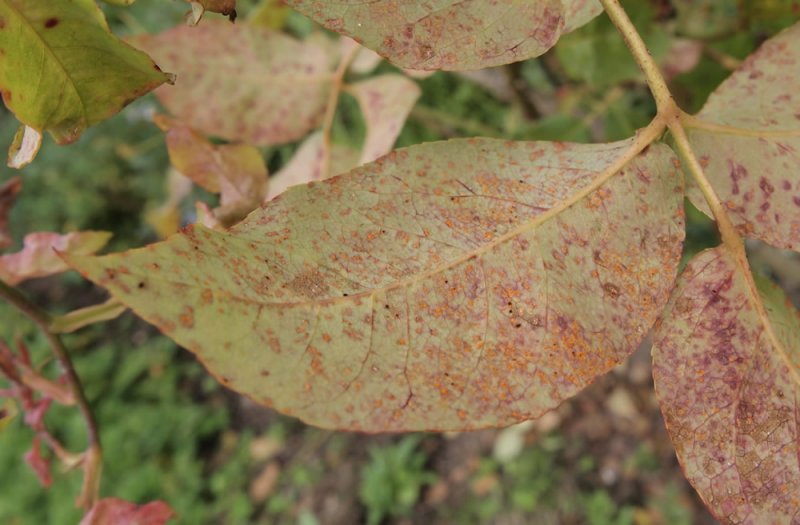
During the ripening period, the cherry plum can be exposed to gray rot (chaotic gray growths on the surface of the fruit or bark). This is a fungal disease that spreads quickly enough. Diseased fruits should be removed immediately, since the fungus is easily tolerated and the entire crop may soon die. As a preventive measure, in early spring, trees are sprayed with Bordeaux liquid, before and after flowering with copper sulfate.
From pests, such insects as aphids, downy silkworms can attack cherry plum. These pests feed on leaves, making holes in them, due to which the leaf plates dry out and crumble. For preventive purposes, trees are sprayed with insecticides (Nitrafen, Verin) until the leaves open. In the bark of cherry plum, beetles Bark beetles, fruit sapwoods can settle. Insects lay larvae under the bark, from which caterpillars appear, feeding on tree sap, and making holes in the trunk. If measures are not taken in time, the tree may dry out. The only way to combat pests is insecticides: Dichlorfos, Chlorophos, Confidor. The processing of the trunks is carried out every 14 days, while the bark must be abundantly moistened with the product. In the fall, diseased branches should be cut and burned.
For cherry plum fruits, the most dangerous is the plum moth. This insect attacks literally the entire tree: first, butterflies lay their eggs on the bark of the tree, then caterpillars appear from the eggs, which penetrate into the ripening fruits through the petiole, and completely damage them from the inside. Spoiled fruits fall off, resulting in crop loss. Since the treatment of fruits with insecticides is not the best way out of the situation, prophylactic spraying should be carried out 2-3 weeks after flowering. The drugs are used: Avant, Ditox, Fosban. The treatment can be repeated after 12-14 days.
Harvesting and storage
Cherry plum Kometa begins to ripen by mid-July. The crop is harvested in several stages as the fruit ripens. A sign of readiness for harvesting is the color of the fruit - in full ripeness the cherry plum of this variety acquires an intense rich red, almost burgundy color. The fruiting period can stretch for two weeks, depending on the number of fruits, since the largest and sunlit ones ripen first.The fruiting of cherry plum is always abundant, therefore, it is not worth delaying with the collection of ripe fruits - although they are not prone to shedding or cracking, if not removed from the tree, they create an additional load and interfere with the ripening of the remaining berries.
Ripe fruits at temperature +3-5 ° C are stored for no more than 10 days. In order to extend this period, as well as for implementation, they should be removed from the tree in incomplete maturity - the cherry plum matures perfectly and acquires the color characteristic of the variety even after removal. The commercial characteristics of this cherry plum are more than high: it is perfectly transported, does not wrinkle, does not rot, and retains its taste for a long time. However, this is provided that it was removed from the tree in incomplete maturity. The Kuban comet variety is special in that its fruits can be eaten fresh as a dessert, since they taste very sweet. In addition, they can be used to prepare all kinds of sweet dishes and preparations, as well as dry and freeze.
Video "Harvest"
From the video you will find out what kind of harvest this cherry plum variety has.


